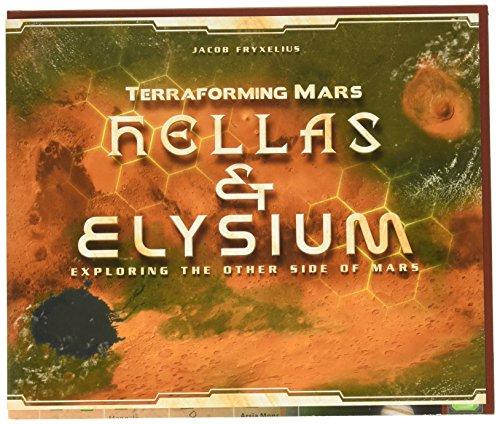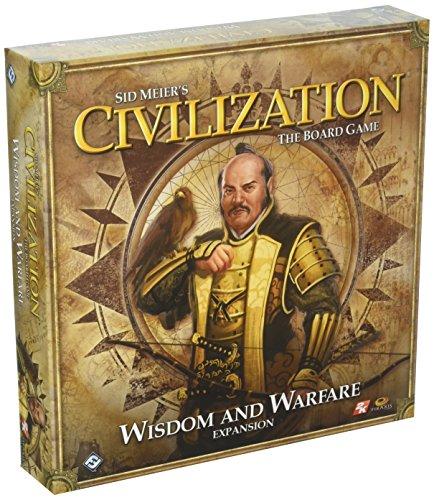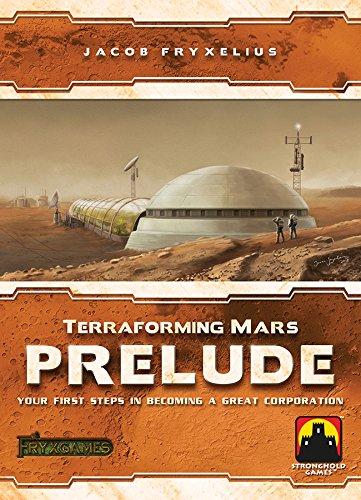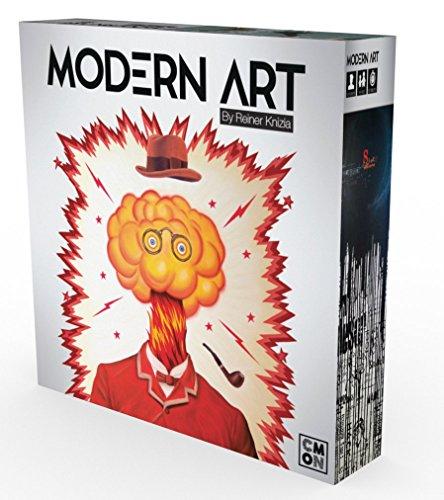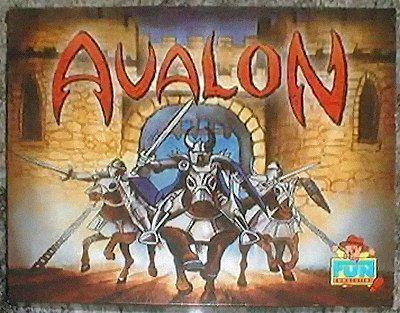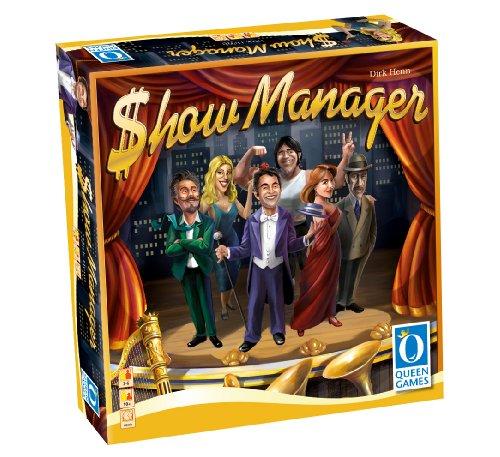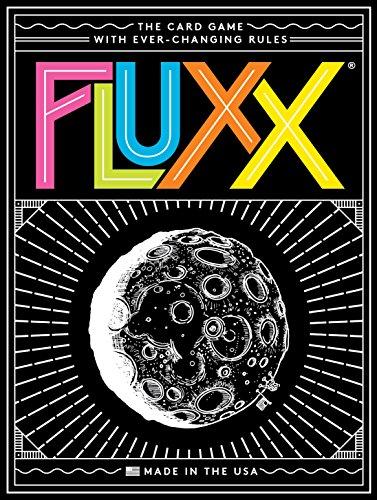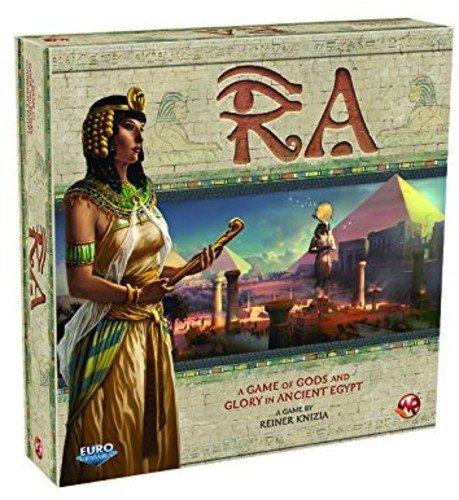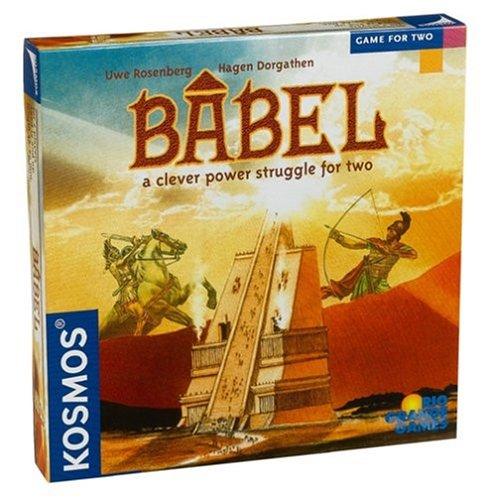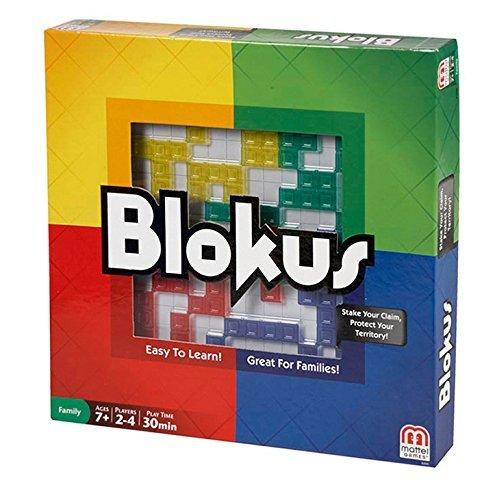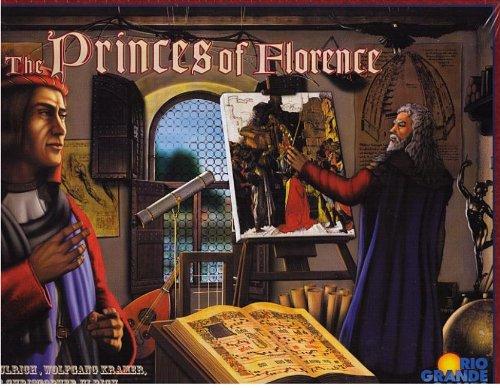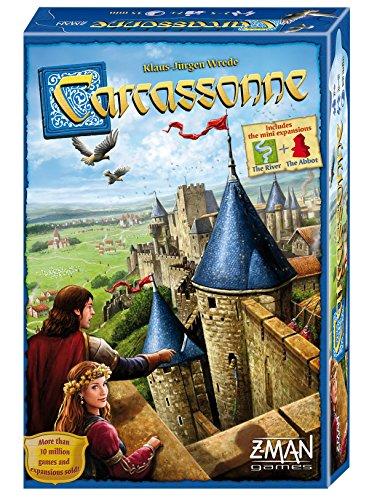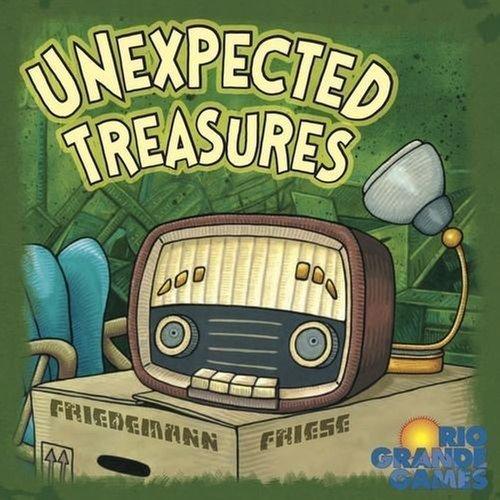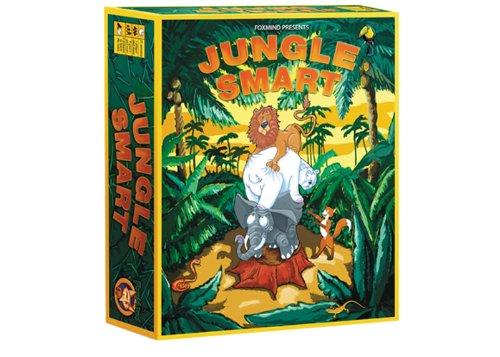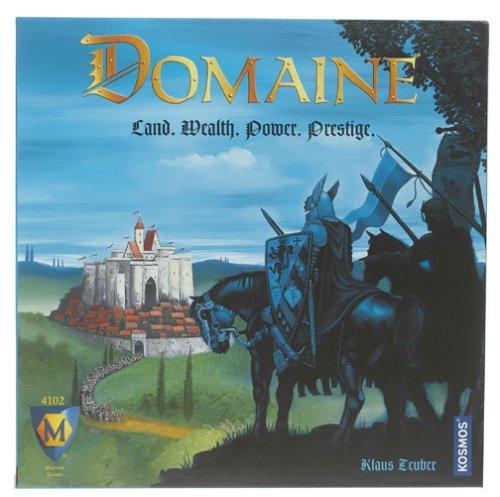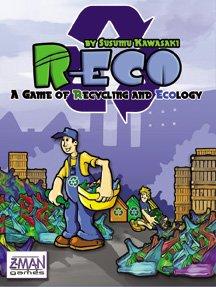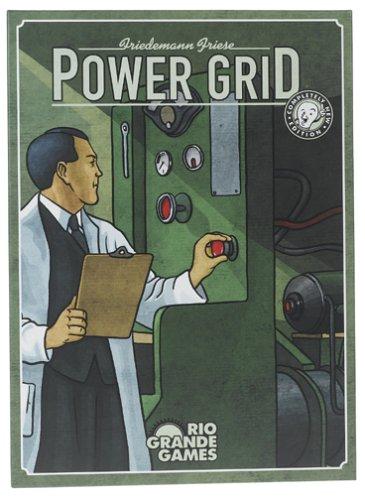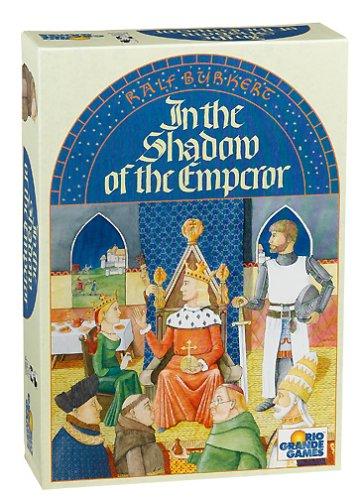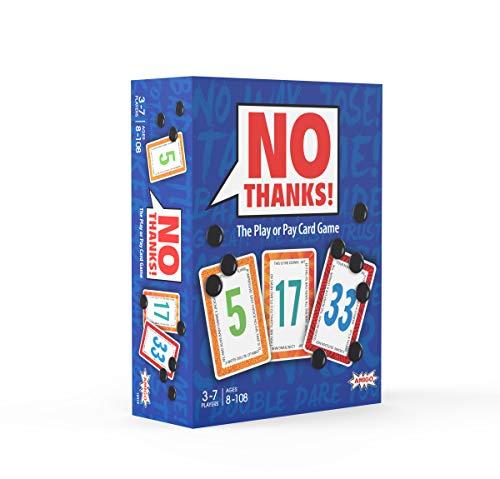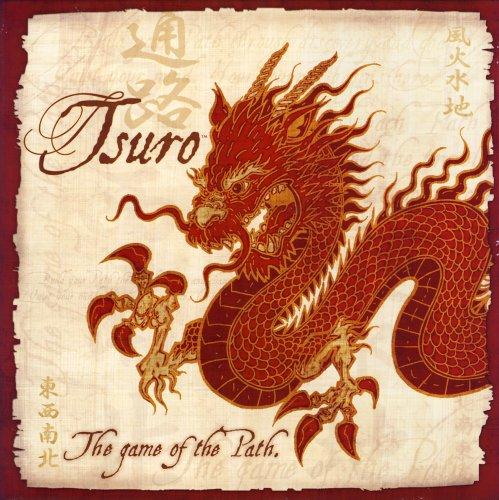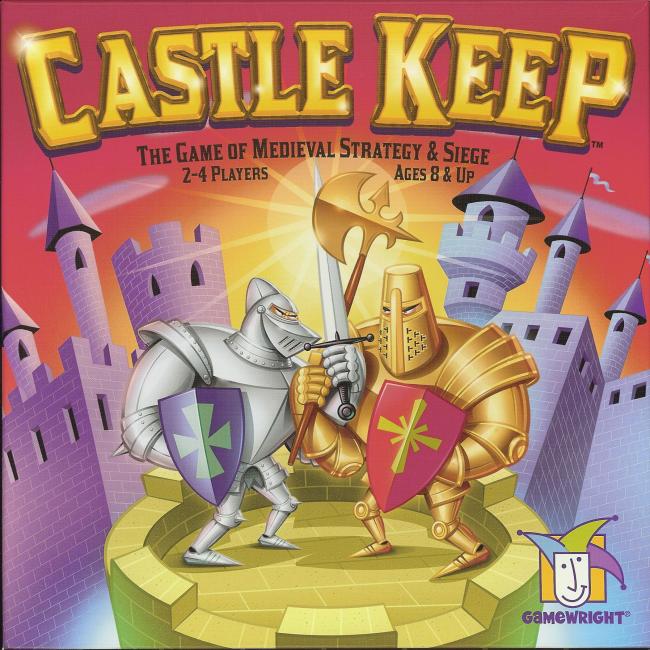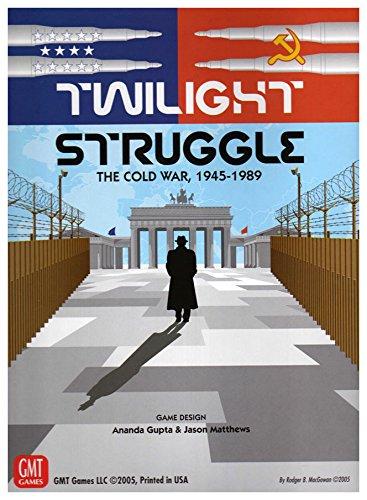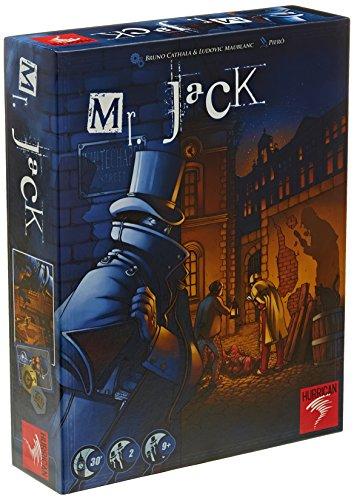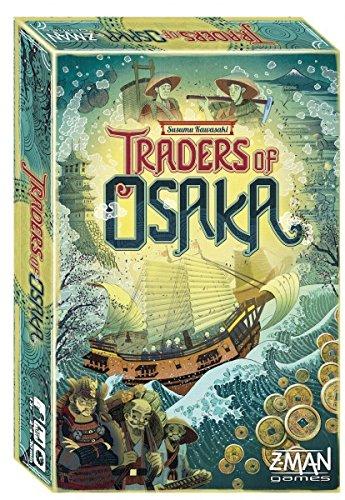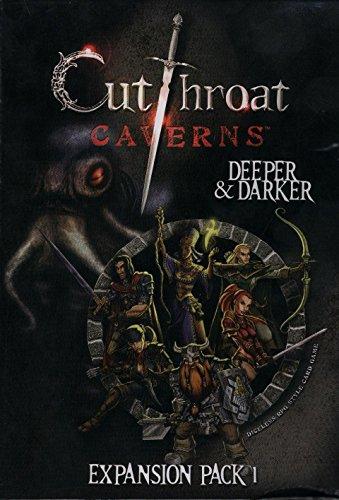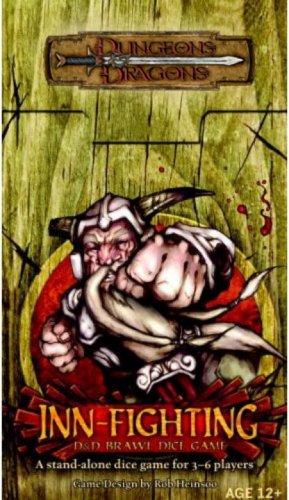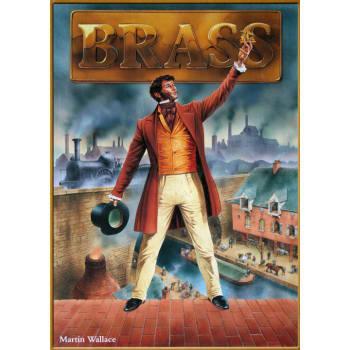
|
Terraforming Mars: Hellas & Elysium Expansion
Terraforming Mars: Hellas & Elysium, the first expansion for the 2016 smash-hit Terraforming Mars, consists of a double-sided game board representing two new areas of Mars: Hellas, which includes Mars' south polar region; Elysium, which is on the opposite side of Mars' equator. Each of these maps consists of new sets of milestones and awards with relevance for that particular map. As examples, place three tiles around the south pole to be a Polar Explorer, or race to have the most estates beside water on Elysium!.
Minimum Age: 12
Minimum Players: 1
Maximum Players: 5
Boardgame Atlas: Link
|
Stronghold Games |
Expansion |
|
1 |

|
The Networks: On The Air Expansion
Expand your copy of The Networks with On the Air, which offers all sorts of extra stuff for fans of the game. this expansion contains New Season 4-5 Shows that grant strange powers, new Stars, Ads, and Network Cards, some blank Shows and Stars for you to customize your copy of the game with, and even stickers that you can apply to your scorning and turn order tokens!
Minimum Age: 13
Minimum Players: 1
Maximum Players: 5
Boardgame Atlas: Link
|
Formal Ferret Games |
Expansion |
|
1 |

|
Civilization: Wisdom and Warfare Expansion
The Wisdom and Warfare expansion for Sid Meier's Civilization: The Board Game introduces a new optional combat system, plus Social Policies to help you build your fledgling empire even more effectively. With six brand new civilizations, new map tiles, and more exciting options, your budding empire will become greater than you ever imagined!
The second expansion for Sid Meier's Civilization: The Board Game adds even more new options to this much-loved game
Minimum Age: 14
Minimum Players: 2
Maximum Players: 5
Boardgame Atlas: Link
|
Fantasy Flight Publishing |
Expansion |
|
1 |

|
Terraforming Mars: Prelude
As the mega corporations are getting ready to start the terraforming process, you now have the chance to make those early choices that will come to define your corporation and set the course for the future history of Mars - this is the prelude to your greatest endeavors!
In Terraforming Mars: Prelude, you get to choose from Prelude cards that jumpstart the terraforming process, or boost your corporation engine. There are also 5 new corporations, and 7 project cards that thematically fit the early stages of terraforming.
Terraforming Mars: Prelude is the third expansion to the smash-hit game, Terraforming Mars, and can be combined with any other expansion or variant.
Minimum Age: 12
Minimum Players: 1
Maximum Players: 5
Boardgame Atlas: Link
|
Stronghold Games |
Expansion |
|
1 |

|
Modern Art
Beauty is in the eye of the beholder, but in the high-stakes world of fine art auctions, there's nothing more beautiful than making a buck.
In Modern Art, players take on the role of curators, buying and selling paintings for their museum. Over the course of four rounds, they take part in a number of auctions, trying to get the best value for the pieces in their collection. Whoever makes the most money wins the game (and keeps their job).
Minimum Age: 14
Minimum Players: 3
Maximum Players: 5
Boardgame Atlas: Link
|
CMON |
Card Game, Economic |
1992 |
1 |

|
Avalon
There are separate cards to determine the course of the tournament, according to the number of players. A round (1 2 etc) always starts with a bartering session, whereby cards may be exchanged and sold. After that, the knights must do battle! In order to be allowed to fight, the knights must he in possession of a full set of weaponry.
A full set consist of shield, sword, lance and armor. Anyone of them might be substituted by a joker card.
The game is finished when only one player is left with a complete set of weaponry. The winner is the player with the largest fortune at this lime.
Minimum Age: 8
Minimum Players: 3
Maximum Players: 6
Boardgame Atlas: Link
|
Fun Connection |
Medieval, Negotiation |
1994 |
1 |

|
Catan
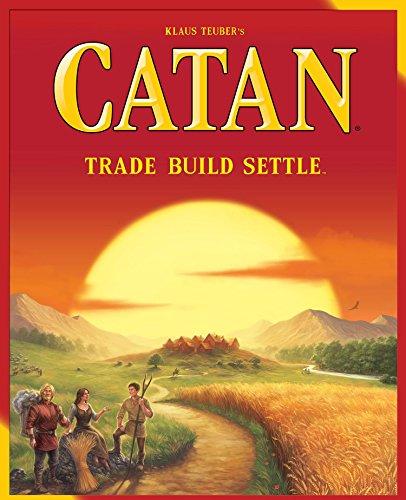
The women and men of your expedition build the first two settlements. Fortunately, the land is rich in natural resources. You build roads and new settlements that eventually become cities. Will you succeed in gaining supremacy on Catan? Barter trade dominates the scene. Some resources you have in abundance, other resources are scarce. Ore for wool, brick for lumber - you trade according to what is needed for your current building projects. Proceed strategically! If you found your settlements in the right places and skillfully trade your resources, then the odds will be in your favor. But your opponents are smart too.
To begin the game, we build the game board using hexagonal terrain tiles. Catan is born - a beautiful island with mountains, pastures, hills, fields, and forests, surrounded by the sea.
Each of us places two small houses on spaces where three terrain hexes meet. They are our starting settlements.
And so it begins. I roll two dice. An “11”! Each terrain hex is marked with a die roll number. Each player who owns a settlement adjacent to a terrain hex marked with the number rolled receives a resource produced by this hex. Hills produce brick, forests produce lumber, mountains produce ore, fields produce grain, and pastures produce wool.
We use these resources to expand across Catan: we build roads and new settlements, or we upgrade our existing settlements to cities. For example, a road costs 1 brick and 1 lumber. If we do not…
Minimum Age: 10
Minimum Players: 3
Maximum Players: 4
Boardgame Atlas: Link
|
Catan Studio |
Family Game, Strategy |
1995 |
2 |

|
El Grande
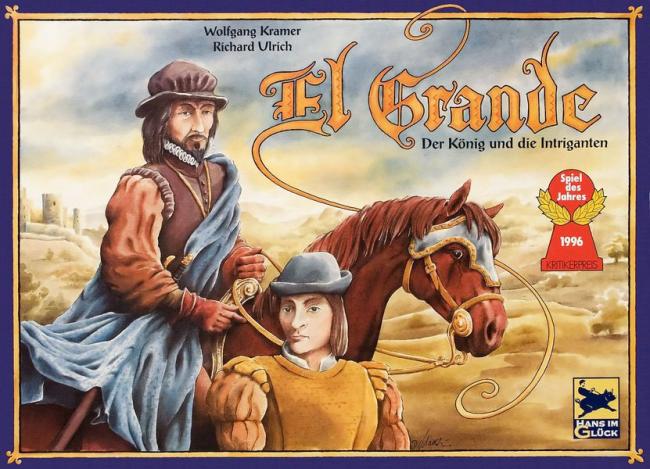
In this award-winning game, players take on the roles of Grandes in medieval Spain. The king's power is flagging, and these powerful lords are vying for control of the various regions. To that end, you draft caballeros (knights in the form of colored cubes) into your court and subsequently move them onto the board to help seize control of regions. After every third round, the regions are scored, and after the ninth round, the player with the most points is the winner.
In each of the nine rounds, you select one of your 13 power cards to determine turn order as well as the number of caballeros you get to move from the provinces (general supply) into your court (personal supply).
A turn then consists of selecting one of five action cards which allow variations to the rules and additional scoring opportunities in addition to determining how many caballeros to move from your court to one or more of the regions on the board (or into the castillo - a secretive tower). Normally, you may only place your caballeros into regions adjacent to the one containing the king pawn. The one hard and fast rule in El Grande is that nothing may move into or out of the king's region. One of the five action cards that is always available each round allows you to move the king to a new region. The other four action cards varying from round to round.
The goal is to have a caballero majority in as many regions (and the castillo) as possible during a scoring round. Following…
Minimum Age: 12
Minimum Players: 2
Maximum Players: 5
Boardgame Atlas: Link
|
Hans im Gluck (Germany) |
Medieval, Renaissance |
1995 |
1 |
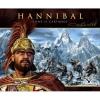
|
Hannibal: Rome vs. Carthage
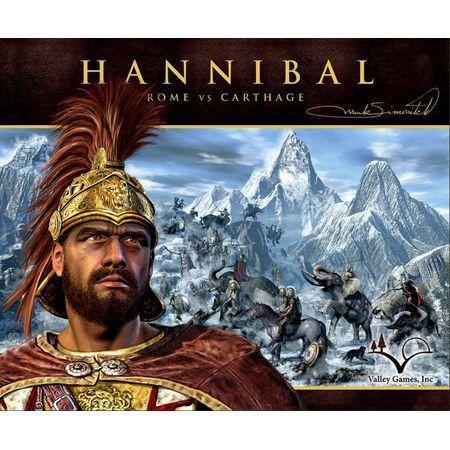
This game uses the very popular card system which first appeared in Avalon Hill's We the People game to detail the struggle between Carthage's Hannibal and the Roman Republic in approximately 200 BC.
Hannibal: Rome vs. Carthage is an asymmetrical card driven game for 2 players set in times of epic struggle between ancient Rome and Carthage. It presents a conflict between two super-powers of Antiquity from classical Clausewitzian perspective, according to which a power only reverts to military operations when there is no other way to achieve the goal: political dominance.
Hannibal: Rome vs. Carthage has been designed by one of the most acclaimed designers in the World, Mark Simonitch. Players use Strategy Cards for multiple purposes: moving generals, levying new troops, reinforcing existing armies, gaining political control of the provinces involved in the war, and introducing historical events. When two armies meet on the battlefield, a second set of cards, called Battle Cards, are used to determine the winner. Ultimately both players seek victory by dominating both fronts: military and political.
Minimum Age: 12
Minimum Players: 2
Maximum Players: 2
Boardgame Atlas: Link
|
Valley Games |
Ancient, Political, Wargame |
1996 |
1 |

|
Show Manager
Being a show manager you invest money for your shows. You will engage the cast for your productions and try to avoid miscasts. Staging your show in new York you may celebrate your biggest triumphs, but also suffer your worst crashes. Money is short and competition fierce. You will gain the most victory points with the most successful shows. In a variant, dream couples may emblaze the show, thus making it more profitable, but beware of Lonely hearts to spoil it all! curtain up for the opening night!.
Minimum Age: 10
Minimum Players: 2
Maximum Players: 6
Boardgame Atlas: Link
|
Queen Games |
Card Game |
1996 |
1 |

|
Fluxx
The latest and greatest version of the card game with ever changing rules! Easier than ever with just the four classic card types that fans the world over have come to know and love. It starts out simple: draw one card and play one card - but New Rule cards quickly make things chaotic.
Even the object of the game will often change as you play, as players swap out one Goal card for another. Can you achieve World Peace before someone changes the goal to Bread and Chocolate?
It all begins with one basic rule: Draw one card, Play one card. You start with a hand of three cards... add the card you drew to your hand, and then choose one card to play, following the directions written on your chosen card. As cards are drawn and played from the deck, the rules of the game change from how many cards are drawn, played or even how many cards you can hold at the end of your turn.
Minimum Age: 8
Minimum Players: 2
Maximum Players: 6
Boardgame Atlas: Link
|
Looney Labs |
Card Game |
1997 |
1 |

|
Tigris & Euphrates
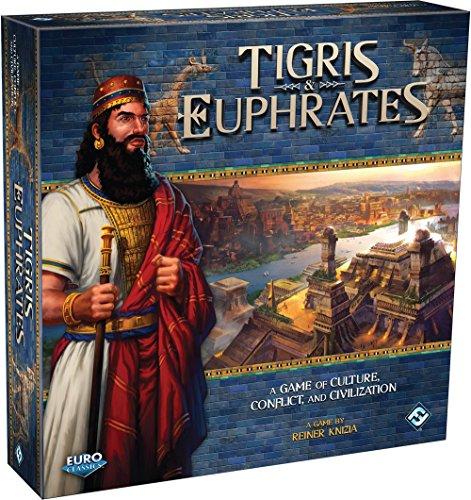
Regarded by many as Reiner Knizia's masterpiece, Tigris & Euphrates is set in the ancient fertile crescent with players building civilizations through tile placement. Players are given four different leaders: farming, trading, religion, and government. The leaders are used to collect victory points in these same categories. However, your score at the end of the game is the number of points in your weakest category, which encourages players not to get overly specialized. Conflict arises when civilizations connect on the board, i.e., external conflicts, with only one leader of each type surviving such a conflict. Leaders can also be replaced within a civilization through internal conflicts.
Starting in the Mayfair edition from 2008, Tigris & Euphrates included a double-sided game board and extra components for playing an advanced version of the game. This "ziggurat expansion", initially released as a separate item in Germany for those who already owned the base game, is a special monument that extends across five spaces of the board. The monument can be built if a player has a cross of five civilization tokens of the same color by discarding those five tokens and replacing them with the ziggurat markers, placing a ziggurat tower upon the middle tile. The five ziggurat markers cannot be destroyed. All rules regarding monuments apply to the ziggurat…
Minimum Age: 12
Minimum Players: 2
Maximum Players: 4
Boardgame Atlas: Link
|
Mayfair Games |
Ancient, Civilization, Territory Building |
1997 |
1 |

|
Lost Cities
Who will discover the ancient civilizations?
Two explorers embark on research journeys to remote corners of the world: the Himalayan mountains, the Central American rainforest, the Egyptian desert, a mysterious volcano, and the bottom of the sea. As the cards are played, the expedition routes take shape and the explorers earn points. The most daring adventurers make bets on the success of their expeditions. The explorer with the highest score after three rounds of expeditions wins. The rules of the game are simple, but beware: The lost cities hold many unseen mysteries!
Minimum Age: 10
Minimum Players: 2
Maximum Players: 2
Boardgame Atlas: Link
|
Thames & Kosmos |
Card Game, Exploration |
1999 |
1 |

|
Ra
Ra is an auction and set-collection game with an Ancient Egyptian theme. Each turn players are able to purchase lots of tiles with their bidding tiles (suns). Once a player has used up his or her suns, the other players continue until they do likewise, which may set up a situation with a single uncontested player bidding on tiles before the end of the round occurs. Tension builds because the round may end before all players have had a chance to win their three lots for the epoch. The various tiles either give immediate points, prevent negative points for not having certain types at the end of the round (epoch), or give points after the final round. The game lasts for three "epochs" (rounds). The game offers a short learning curve, and experienced players find it both fast-moving and a quick play.
Minimum Age: 14
Minimum Players: 2
Maximum Players: 5
Boardgame Atlas: Link
|
Alea |
Ancient, Mythology |
1999 |
1 |

|
Chinatown
New York in the 1960s. A new wave of Chinese immigrants is moving into Chinatown. The adoption of the new immigration act has launched the district into a demographic boom! It now reaches Canal Street to the north and Bowery Street to the east. Arriving by the thousands, the immigrants seek to buy buildings, establish businesses, and fulfill the American Dream! Take a bite of the Big Apple and use your talents to acquire the most extraordinary fortune in America in Chinatown!
Minimum Age: 12
Minimum Players: 3
Maximum Players: 5
Boardgame Atlas: Link
|
Z-Man Games |
City Building, Economic |
1999 |
1 |

|
Paths of Glory
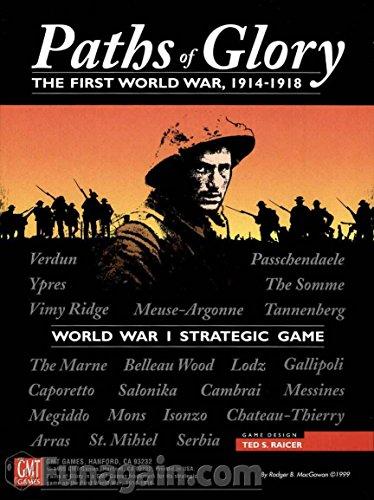
They called it the Great War. In over four years of titanic struggle, the ancient Europe of Kings and Emperors tore itself to pieces, giving birth to our own violent modern age. The bloody battles fought in the trenches of the Western Front, the icy plains of Poland, the mountains of the Balkans, and the deserts of Arabia, shaped the world we know today. We are all orphans of the Great War.
Paths of Glory: The First World War, designed by six-time Charles S. Roberts Award winner, Ted Raicer, allows players to step into the shoes of the monarchs and marshals who triumphed and bungled from 1914 to 1918. As the Central Powers you must use the advantage of interior lines and the fighting skill of the Imperial German Army to win your rightful ''place in the sun.'' As the Entente Powers (Allies) you must bring your greater numbers to bear to put an end to German militarism and ensure this is the war ''to end all wars.'' Both players will find their generalship and strategic abilities put to the test as Paths of Glory's innovative game systems let you recreate all the dramatic events of World War I.
Minimum Age: 14
Minimum Players: 2
Maximum Players: 2
Boardgame Atlas: Link
|
GMT Games |
Wargame, World War I |
1999 |
1 |

|
Babel
In ancient times, monarchs built temples to demonstrate their wealth. The highest temple belonged to the wealthiest monarch. In this two-player game by Uwe Rosenberg, you are one of these long-forgotten monarchs. With the help of various nations, your temples will grow more and more beautiful, reaching ever closer to the sky. But beware of your opponent and the nations on his side, for they will want to destroy your temples and convince your own people to change sides...
So, who will be the greatest monarch?
Minimum Age: 10
Minimum Players: 2
Maximum Players: 16
Boardgame Atlas: Link
|
Z-Man Games |
Ancient, Card Game, City Building |
2000 |
1 |

|
Taj Mahal
Master the dance of intrigue and compete for the favor of the Grand Mogul.
Only the best leaders can carry India into a new age. While the Grand Mogul tours the twelve provinces of India, you must prove that you are worthy of the responsibility. Master the dance of intrigue to win the approval of the Grand Mogul, the loyalty of his advisors, and the wealth of the provinces. Choose your battles wisely, as the Grand Mogul may be more open to your influence in the next province you visit.
While visiting the provinces, you?ll have the chance to influence the court and the Grand Mogul himself. Strategically play your Influence cards or choose to withdraw, letting your competitors exhaust their resources as they fight for control. At the end of a visit to a province, players will compare cards and symbols, seeing who spread their influence the best to each member of the court, swaying them to their side.
Minimum Age: 12
Minimum Players: 2
Maximum Players: 5
Boardgame Atlas: Link
|
Z-Man Games |
Bluffing, Political |
2000 |
1 |

|
Blokus
Stake your claim and protect your territory with the Blokus game! It takes less than a minute to learn, but offers endless strategy and fun challenges for the whole family. Each player gets a set of 21 pieces – in red, blue, green, or yellow – then takes turns placing them on the board. There’s just one rule: each piece you play must touch at least one other piece of the same color, but only at the corners! The goal is to fit the most pieces on the board. The game ends when no more pieces can be placed down, and the player with the lowest number remaining wins!
Minimum Age: 5
Minimum Players: 2
Maximum Players: 4
Boardgame Atlas: Link
|
Mattel Games |
Abstract, Territory Building |
2000 |
1 |

|
Princes of Florence
Players attract artists and scholars trying to become the most prestigious family in Florence. Each player is given a palace grid and reference chart and attempts to gain the most victory points after seven rounds. Scoring victory points can be done in a variety of ways although most will be earned by playing profession cards to generate work points. There are a variety of professions such as astronomers, organists and architects. Each is attracted to a particular combination of building, landscape feature, and social freedom. The more the player can match these preferences then the more work points are generated. If a player satisfies the minimum requirement of work points, which increases each round, then the work can be created and the player can then trade the work points for cash and/or victory points.
Minimum Age: 12
Minimum Players: 2
Maximum Players: 5
Boardgame Atlas: Link
|
Rio Grande Games |
City Building, Renaissance |
2000 |
1 |

|
Carcassonne
Each game of Carcassonne reveals a unique environment as tiles form a landscape of cities, roads, fields, and monasteries. Claim these features with your followers to win the game.
Carcassonne is a tile placement game where players collectively construct the area around the medieval French city of Carcassonne while competing to place followers on various features and score the most points. First published in 2000, the game's accessible yet deep design has attracted a wide fan base and led to the development of numerous expansions and standalone titles in the Carcassonne line.
Minimum Age: 7
Minimum Players: 2
Maximum Players: 5
Boardgame Atlas: Link
|
Z-Man Games |
Family Game |
2000 |
2 |

|
Hive
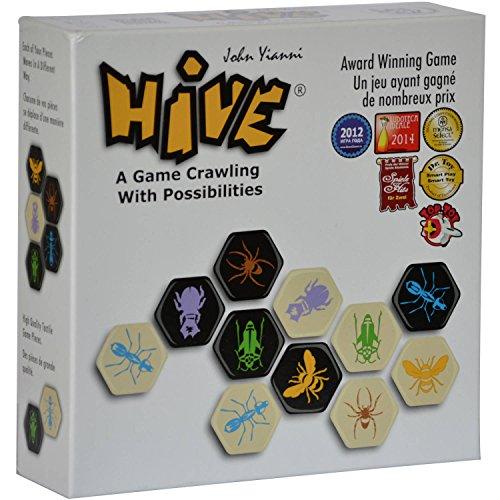
Hive is a boardless, strategic game for 2 players ages 8 and up. The object of the game is to surround your opponent's queen bee while trying to block your opponent from doing the same to your queen bee.
Each player has 11 tiles, all in all, representing 5 different insects. The players take turns, either choosing to add a tile to the hive or moving a tile in the hive.
Each tile has a unique way of moving (like in chess) and resembles the movement of the insect depicted on the tile. For instance, the grasshopper is the only tile which can jump.
Hive is a fun game to play because of its simple rules, yet challenging for its depth. Hive enhances each player's skills of strategic planning, tactical thinking and spatial vision. To win, you must play both the offense (surround your opponent's bee) and the defense (to protect your queen bee).
A nice decorative storage bag makes it easy to carry, store and play anywhere.
Minimum Age: 8
Minimum Players: 2
Maximum Players: 2
Boardgame Atlas: Link
|
Gen Four Two Games |
Abstract, Strategy |
2001 |
2 |

|
Unexpected Treasures
Players set out on a mission to collect old furniture from a bulky waste collection site and to turn a profit by selling their recovered goods to paying customers. It's first come, first served, but players are only able to take a few items home at a time. And they have to be wary of thieves, who are out on the prowl just waiting to steal the collected goods from the players' homes.
Minimum Age: 13
Minimum Players: 3
Maximum Players: 6
Boardgame Atlas: Link
|
Rio Grande Games |
Family Game |
2002 |
1 |

|
Puerto Rico
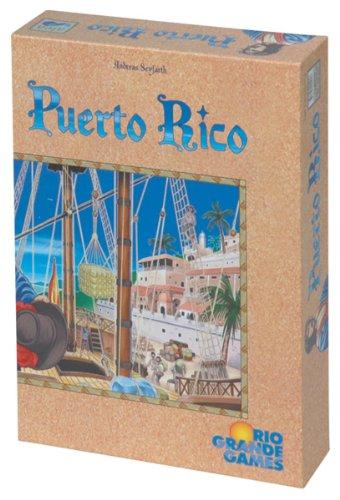
In Puerto Rico players assume the roles of colonial governors on the island of Puerto Rico. The aim of the game is to amass victory points by shipping goods to Europe or by constructing buildings. Each player uses a separate small board with spaces for city buildings, plantations, and resources. Shared between the players are three ships, a trading house, and a supply of resources and doubloons. The resource cycle of the game is that players grow crops which they exchange for points or doubloons. Doubloons can then be used to buy buildings, which allow players to produce more crops or give them other abilities. Buildings and plantations do not work unless they are manned by colonists.
During each round, players take turns selecting a role card from those on the table (such as "Trader" or "Builder"). When a role is chosen, every player gets to take the action appropriate to that role. The player that selected the role also receives a small privilege for doing so - for example, choosing the "Builder" role allows all players to construct a building, but the player who chose the role may do so at a discount on that turn. Unused roles gain a doubloon bonus at the end of each turn, so the next player who chooses that role gets to keep any doubloon bonus associated with it. This encourages players to make use of all the roles throughout a typical course of a game.
Puerto Rico uses a variable phase order mechanic, where a "governor" token is passed clockwise to…
Minimum Age: 12
Minimum Players: 2
Maximum Players: 5
Boardgame Atlas: Link
|
Rio Grande Games |
City Building, Economic, Farming |
2002 |
1 |

|
Jungle Smart
Jungle Smart – one of many names under which this design has been released – is a simultaneous puzzle solving game. Three animals stand on two platforms, and you are trying to change their configuration to match a target card by issuing commands like "Ma", which moves the bottom animal on one platform to the top, or "Ni" which swaps the top two animals on the two platforms. As a result, the game is a race to shout out multi-syllable commands such as the eponymous "MaNiKi", or "LoNiMaSo". The first player to do so correctly wins the target card, and whoever collects the most cards wins!
Minimum Age: 8
Minimum Players: 1
Maximum Players: 10
Boardgame Atlas: Link
|
FoxMind |
Animals, Family Game, Puzzle, Real-time |
2002 |
1 |

|
Carcassonne: Hunters and Gatherers Board Game

Thousands upon thousands of years before the first bricks were laid to build the mighty city of Carcassonne, the area was settled by a primitive people. These people hunted wild animals, gathered berries, and caught fish to ensure their survival. Prehistoric cave paintings and archaeological treasures give us an understanding of the lives of these prosperous hunters and gatherers.
As in other Carcassonne games, players take turns placing tiles to create the landscape and placing meeples to score points from the map they're creating. The player with the most points at the end of the game wins.
Instead of cities, roads, and farms, Carcassonne: Hunters and Gatherers has forests, rivers, lakes, and meadows. Players' meeples can represent hunters (when placed in the meadows), gatherers (in a forest), or fishermen (on a river segment). They also have huts, which can be placed on rivers or lakes to get fish from the entire river system.
Minimum Age: 8
Minimum Players: 2
Maximum Players: 5
Boardgame Atlas: Link
|
Renegade Game Studios |
Prehistoric |
2002 |
1 |

|
Domaine
In Domaine, players form domaines by placing walls on the modular board to enclose territory. Completed domaines can then be expanded, even into your opponents'. Protect domaines by placing knights, which resist expansion.
Actions are taken by playing cards that have a cost associated with them. Gain money by selling cards and controlling mines. Sold cards can be acquired by other players.
Players score points based on the quantity and type of terrain enclosed in their domaines, as well as by controlling many mines of a single type. The winner is the first player to cross a specific point threshold or the player with the most points when the card deck runs out.
Minimum Age: 12
Minimum Players: 2
Maximum Players: 4
Boardgame Atlas: Link
|
Mayfair Games |
Medieval, Territory Building |
2003 |
1 |

|
Ideology: 2nd Edition
Ideology is a 2-5 player game where each player symbolizes one of the 20th Century's most powerful Ideologies -- Capitalism, Islamic Fundamentalism, Imperialism, Communism, or Fascism. Starting with one global region completely under its sway, each Ideology attempts to influence and control the independent regions of the earth.
Each Ideology will use economic, cultural, and military influence to bring countries under control. If a player has influence in a country in which you have influence, you can both engage in economic, cultural, and military conflict (depending on your diplomatic stance toward each other) to knock out your opponent's influence. You can also purchase Advancements like Propaganda, Tactics, etc. to make it harder for an opponent to conflict you or to make it easier for you to influence a country.
The goal is to posses a Global Influence of 12 or more.
Minimum Age: 12
Minimum Players: 2
Maximum Players: 5
Boardgame Atlas: Link
|
Z-Man Games |
Political |
2003 |
1 |

|
R-Eco
You are garbage collectors whose task is to place recycled goods in their proper waste disposal facility. But you have to watch how much garbage you carry or you will overload your truck and then have to dump the excess materials illegally - not a good thing if you want to become the only authorized garbage collector in the city.
Minimum Age: 8
Minimum Players: 2
Maximum Players: 5
Boardgame Atlas: Link
|
Z-Man Games |
Card Game, Environmental |
2003 |
1 |

|
Power Grid
The objective of Power Grid is to supply the most cities with power when someone's network gains a predetermined size. In this new edition, players mark pre-existing routes between cities for connection, and then bid against each other to purchase the power plants that they use to power their cities. However, as plants are purchased, newer, more efficient plants become available, so by merely purchasing, you're potentially allowing others access to superior equipment.
Additionally, players must acquire the raw materials (coal, oil, garbage, and uranium) needed to power said plants (except for the 'renewable' windfarm/ solar plants, which require no fuel), making it a constant struggle to upgrade your plants for maximum efficiency while still retaining enough wealth to quickly expand your network to get the cheapest routes.
Minimum Age: 12
Minimum Players: 2
Maximum Players: 6
Boardgame Atlas: Link
|
Rio Grande Games |
Economic, Industry/Manufacturing |
2004 |
1 |
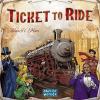
|
Ticket To Ride

Ticket to Ride is a cross-country train adventure game. Players collect train cards that enable them to claim railway routes connecting cities throughout North America. The longer the routes, the more points they earn. Additional points come to those who can fulfill their Destination Tickets by connecting two distant cities, and to the player who builds the longest continuous railway. So climb aboard for some railroading fun and adventure. You've got a Ticket to Ride!
October 2, 1900 -- it's 28 years to the day that noted London eccentric, Phileas Fogg accepted and then won a 20,000 bet that he could travel Around the World in 80 Days. Now at the dawn of the century some old friends have gathered to celebrate Fogg's impetuous and lucrative gamble -- and to propose a new wager of their own. The stakes: $1 million in a winner-takes-all competition. The objective: to see the most cities in North America -- in just 7 days.
-Spiel Des Jahres 2004(German game of the year)
-As d'Or Cannes 2004 (French game of the year)
-Game of the year 2004 - Japan
-Game of the year 2004 - Sweden
-Game of the year 2004 - Finland
-Diana Jones Excellence in Gaming Award 2004
-Origins Award Winner - Best Board Game 2005
-Game of the year 2004 - Spain
-Parent's Choice Foundation Silver Medal 2004
Minimum Age: 8
Minimum Players: 2
Maximum Players: 5
Boardgame Atlas: Link
|
Days of Wonder |
Eurogame |
2004 |
1 |

|
St. Petersburg
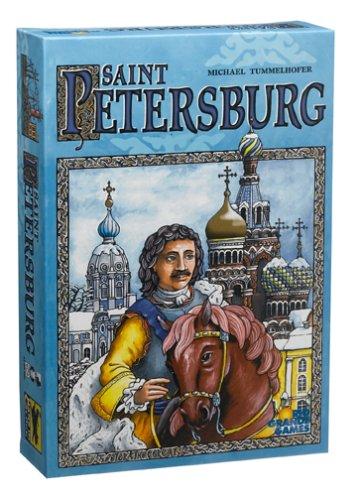
On May 16th, 1703, Czar Peter laid the cornerstone for the first building in Saint Petersburg. Quickly, glorious buildings were added, always being expanded, so that Nobility (bringing victory points) may want to move in. But to accomplish this, one needs merchants who can provide the necessary Rubles, or the glory is over. The competition isn't sleeping either, and can sometimes steal a desired card right out from under your nose.
Saint Petersburg has a board to tally victory points and to set out the four types of cards. It is the cards themselves that players need to collect. In each round – with the number of rounds dependent on the number of players and the randomness of card availability – players first pay for CRAFTSMEN who supply money for further purchases; then BUILDINGS to score points; then ARISTOCRATS, who are needed for money, points, and end-of-game scoring; and finally, unique cards from all three categories which give greater benefits. During the first rounds, players never have enough money to buy every card they want. During later rounds, they have plenty of money, but the cards they'd like to buy may have already come and gone...
Minimum Age: 10
Minimum Players: 2
Maximum Players: 4
Boardgame Atlas: Link
|
Rio Grande Games |
Age of Reason, Card Game, Economic |
2004 |
1 |

|
San Juan

Prospector or Trader? Builder or producer? Which roles will you play in the new world? Your goal is to become San Juan's most prosperous citizen. Manufacture goods like coffee or tobacco, then trade them for money. Use the money to construct buildings to make your city more prosperous.
A card game based on Puerto Rico. The pack of 110 cards consists of production buildings (indigo, sugar, tobacco, coffee, and silver) and "violet" buildings that grant special powers or extra victory points. Cards from the hand can be either built or used as money to build something else. Cards from the deck are used to represent goods produced by the production buildings, in which case they are left face-down. A seven-card hand limit is enforced once per round.
This new edition of San Juan contains the additional buildings from the previously available expansion but not the event cards. It also contains a new building not previously available in any version: The Hut. This building grants a card when nothing was sold in the trader phase.
Minimum Age: 10
Minimum Players: 2
Maximum Players: 4
Boardgame Atlas: Link
|
Ravensburger |
Card Game, Economic |
2004 |
1 |

|
Shadow of the Emperor Board Game
In the Shadow of the Emperor is a tactical game for 2-4 players. Players represent aristocratic families at the Court of the Holy Roman Emperor. Players seek to get their family members into influential positions with the various electorships of the Empire. Once there they accumulate votes towards being elected to be Holy Roman Emperor. Players choose actions for their family members to take, which allow them to wrest control of the various Elector States (each of which has a special ability in addition to its voting power) whilst displacing their opponents. However, family members age and die and the number of action cards is limited, restricting the tactical options. As players build their influence they collect victory points and the player with the most points at the end of the game wins.
Minimum Age: 12
Minimum Players: 2
Maximum Players: 4
Boardgame Atlas: Link
|
Rio Grande Games |
Medieval, Political |
2004 |
1 |

|
No Thanks!
It sounds so simple, and it is: Take a card or pay one chip. If you take the card you get its points, but points are bad. But you also get the chips that others have played, and that's good (each chip nullifies one point). So say, "No thanks!" and play your chips, but watch out: When you're out of chips that card's all yours.
Minimum Age: 8
Minimum Players: 3
Maximum Players: 7
Boardgame Atlas: Link
|
Amigo Spiel |
Card Game |
2004 |
1 |

|
Tsuro
Build your own Path without your opponents steering you in the wrong direction-or off the board! Tsuro is the quick-playing game in which directions can change as easily as the game plays. The rules are simple: You place your stones, select your tiles, and attempt to build a safe Path for your journey. The Paths of other players cross and connect, so the choices you make affect all the journeys across the board. Stay on the right Path-your journey begins here.
Minimum Age: 8
Minimum Players: 2
Maximum Players: 8
Boardgame Atlas: Link
|
Calliope Games |
Abstract, Fantasy |
2004 |
1 |
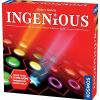
|
Ingenious
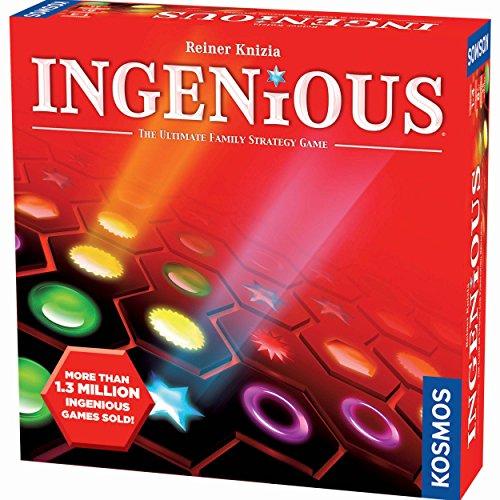
Think outside the square! Ingenious is an abstract tile-placement game in which the players take turns placing tiles in the shape of two connected hexagons into a hexagonal grid on the board. Each tile has two colored symbols on it. Players earn points in a specific color for each line of matching colored symbols that they extend when they place a tile. A player's final score is determined by his or her lowest scoring color, not the highest. The winner is the player whose lowest score is the highest compared to the other players' lowest scores, and not the player with the highest scoring color overall.
The game includes 120 domino-style tiles, each consisting of two hexagons connected along one side. Each hexagon has one of six colored symbols in it, with most tiles having two different colored symbols and some having two of the same colored symbol. Each player has a rack with six tiles on it. During his or her turn, each player places one tile from his or her rack onto two empty hexagonal spaces on the game board. For each of the two hexagons composing this tile, the player scores one point in the hexagon's color for each already-placed hexagon of the same color that radiates outward in a straight line from one of the placed hexagon's five sides. If a player's score in a color reaches 18, he or she immediately takes another turn. At the end of the turn, the player refills his or her rack to six tiles.
When no more tiles can be placed on the game…
Minimum Age: 10
Minimum Players: 1
Maximum Players: 4
Boardgame Atlas: Link
|
Thames & Kosmos |
Abstract |
2004 |
1 |
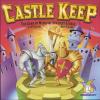
|
Castle Keep
Castle Keep
The Game of Medieval Strategy and Siege
Raise your castle! Raze the enemy! In this clever game of medieval maneuvers, build a castle with walls, towers, and a keep by matching color, shape, or both. Will you use your game tiles to strengthen your fortress or to attack vulnerable opponents? Choose wisely, or you may find yourself in royal ruins! The first player to build a complete castle rules the land.
Minimum Age: 8
Minimum Players: 1
Maximum Players: 4
Boardgame Atlas: Link
|
Gamewright |
Children's Game, Medieval |
2005 |
1 |

|
Twilight Struggle
This Deluxe Edition of Twilight Struggle seeks to capture the feeling of that earlier era. Twilight Struggle is a two-player game simulating the forty-five year dance of intrigue, prestige, and occasional flares of warfare between the Soviet Union and the United States. Twilight Struggle recreates the conflict between the most powerful nation states the world has ever known. The scope of the game covers the entire world as it was found in 1945. Players move units and exert influence in attempts to gain allies and control for their superpower.
Minimum Age: 13
Minimum Players: 1
Maximum Players: 2
Boardgame Atlas: Link
|
Flat River Group |
Political |
2005 |
1 |

|
Caylus
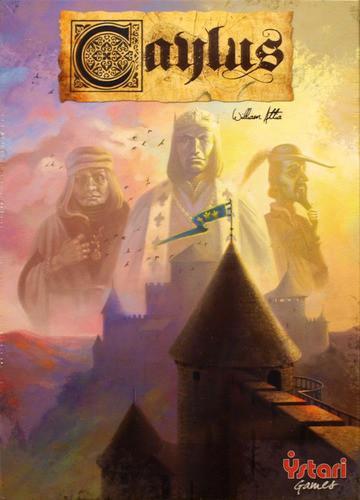
Once upon a time ...
1289. To strengthen the borders of the Kingdom of France, King Philip the Fair decided to have a new castle built. For the time being, Caylus is but a humble village, but soon, workers and craftsmen will be flocking by the cartload, attracted by the great prospects. Around the building site, a city is slowly rising up.
The players embody master builders. By building the King's castle and developing the city around it, they earn prestige points and gain the King's favor. When the castle is finished, the player who has earned the most prestige wins the game. The expansion Caylus Expansion: The Jeweller was included in the 2nd Edition.
Each turn, players pay to place their workers in various buildings in the village. These buildings allow players to gather resources or money, or to build or upgrade buildings with those resources. Players can also use their resources to help build the castle itself, earning points and favors from the king, which provide larger bonuses. Building a building provides some immediate points, and potentially income throughout the game, since players receive bonuses when others use their buildings. The buildings chosen by the players have a heavy impact on the course of the game, since they determine the actions that will be available to all the players.
As new buildings are built, they stretch along a road stretching away from the castle, and not all buildings can be used every turn. Players have…
Minimum Age: 12
Minimum Players: 2
Maximum Players: 5
Boardgame Atlas: Link
|
Ystari Games |
City Building, Economic, Medieval |
2005 |
1 |

|
Nexus Ops
Nexus Ops is a light-medium science fiction war game. The game boasts a hexagonal board that is set up differently every time, as well as (in the Avalon Hill edition) cool "glow" miniatures and lots of combat. Players control competing futuristic corporations that battle each other for control of the moon's Rubium Ore. By winning battles and fulfilling Secret Missions, you can obtain victory points.
Units are composed of various alien races and have stats similar to those used in the Axis & Allies series. Combat is also similar. Players who lose battles are compensated with Energize cards which grant them special powers later. Players can also obtain Energize cards by controlling the Monolith, a raised structure in the center of the grid. The first person to reach the required number of victory points wins the game.
Minimum Age: 12
Minimum Players: 2
Maximum Players: 4
Boardgame Atlas: Link
|
Fantasy Flight Publishing |
Exploration, Fighting, Science Fiction, Wargame |
2005 |
1 |

|
Wits & Wagers
Wits & Wagers is history’s most award-winning party game. Why does everyone love Wits & Wagers? Because you don’t need to know the answers to win! The excitement is betting on the best guess. First, everyone writes down a guess to a fun question like “In inches, how tall is the Oscar statuette?” Then players bet on which guess is closest to the right answer. Strike it big and you'll be cheering like you just hit the jackpot!
Minimum Age: 10
Minimum Players: 3
Maximum Players: 21
Boardgame Atlas: Link
|
North Star Games |
Bluffing, Party Game, Trivia |
2005 |
1 |

|
Mr. Jack
London 1888. Whitechapel District. 00.25am As usual too much fog. Then a shout? A victim? Jack struck again and the hunt still continues. Finally 8 investigators have come together to try to uncover the mystery, but can they uncover it before he strikes again? Mr. Jack is his name and he is a crafty one and he won't stop until he is caught!
Minimum Age: 9
Minimum Players: 2
Maximum Players: 2
Boardgame Atlas: Link
|
Hurrican |
Deduction, Mystery |
2006 |
1 |

|
Traders of Osaka
In charge of valuable cargo, you must deliver it from Osaka to Edo. But fierce competition and the Black Tide may sink your hopes for fortune! Set sail for Japan in this exciting game for traders full of opportunities... and opportunists!
Minimum Age: 12
Minimum Players: 2
Maximum Players: 4
Boardgame Atlas: Link
|
Z-Man Games |
Ancient, Card Game, Economic |
2006 |
1 |

|
Cutthroat Caverns Core Set
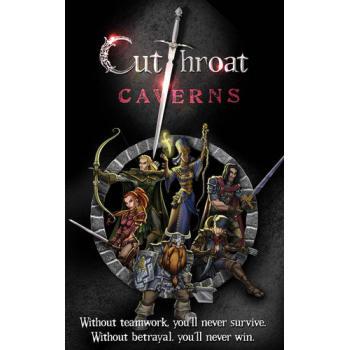
An artifact of untold power lies in your hands. To claim it, you must escape the caverns alive. No less than nine horrific beasts stand in your way - that, and the greed of the other players.
In this game of kill-stealing, you decide whether to swing for a whopping 50 points of damage - or hold back, awaiting a more opportune time to strike. Only the final blow matters if you are to score the kill. Hold back or sabotage other's plans too much - and the entire party will die, without a winner.
Okay, that's what it says on the box... what's it really like?
Cutthroat Caverns is truly unique. While most definitely a highly interactive card game and very easy to play, it requires the strategic thinking of a board game. And, for some uncanny reason, the game will make you FEEL like you are in the middle of a classic dungeon crawl, even though table talk is about as much roleplaying as you are likely to do. That all said, it has proven to have a very broad appeal with gamers across several genres.
The real joy is the delicate balance between helping the party (and staying alive) vs working towards your own selfish goals (and risking the welfare of everyone). There are no dice. Each Turn, you will choose how much damage you are willing to do to the monster- or won't do - as you jockey for position to land the killing blow. And when characters can make that kind of decision, things get very funny & very deadly - very quickly…
Minimum Age: 12
Minimum Players: 3
Maximum Players: 6
Boardgame Atlas: Link
|
Smirk and Dagger Games |
Adventure, Card Game, Fantasy, Fighting, Humor |
2007 |
1 |

|
Cutthroat Caverns Deeper And Darker Expansion 1
The first expansion to Cutthroat Caverns, Deeper & Darker adds fifteen new monsters to hinder your quest to escape alive with the Sacred Item of Unimaginable Marvel...which means fifteen new monsters to use against your "friends" that are trying to escape with your artifact. It also adds some impact to character choice--each now has a unique ability, usable once per game, that might give you that special push that you need to make sure that you're the one left standing with the most Prestige when the dust settles.
Minimum Age: 12
Minimum Players: 3
Maximum Players: 6
Boardgame Atlas: Link
|
Smirk & Dagger |
Adventure, Card Game, Expansion, Fantasy, Fighting, Humor |
2007 |
1 |

|
Dungeons & Dragons Inn-Fighting
From the creator of Three-Dragon Ante, the Dungeons & Dragons in-world card game, comes the perfect dice game for D&D players and characters alike. With a roll of the dice, you determine whether to hurl a mug of ale at the warbling bard or smash a chair over the drunken barbarian's back. Treachery and chaos abound, as every game promises a new and hilarious tavern brawling experience. Inside every Inn Fighting box you'll find a rules sheet, a set of 6 special six-sided dice, 1 twenty-sided die, and 52 character cards. Choose a character, trade some dice rolls with your friends, and see who's left standing in the end!
Minimum Age: 12
Minimum Players: 3
Maximum Players: 6
Boardgame Atlas: Link
|
Wizards of the Coast |
Dice, Fantasy, Fighting, Party Game |
2007 |
1 |
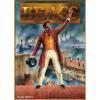
|
Brass Deluxe Edition
Brass is set in Lancashire, England in the 18th Century. The world is about to change from Medieval to Modern - also known as the Industrial Revolution. Can you take advantage of this time of transformation? What strategy will you follow? Build cotton mills? Develop new technologies? Dig canals? Produce coal, or maybe steel? There is no simple answer and the opportunities that arise will be different in each game you play as you move through the Canal and Railway periods, making the best return you can from your investments - just in time to snatch the next opportunity from under the noses of your rivals.
Brass is a tactical game in which you need to ensure that the industries you create are sustainable, making Brass unique and endlessly fascinating. It's an excellent game for experienced and dedicated game players as well as those interested in strategic multi-layered games of history.
Minimum Age: 13
Minimum Players: 2
Maximum Players: 4
Boardgame Atlas: Link
|
Eagle-Gryphon Games |
Economic, Industry/Manufacturing, Transportation |
2007 |
1 |
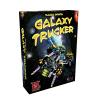
|
Galaxy Trucker
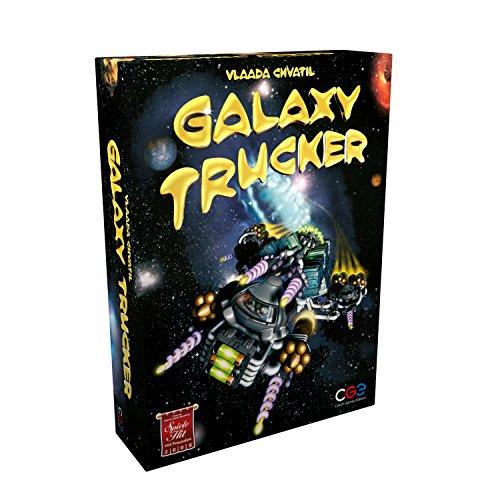
Corporation Incorporated is an interplanetary construction firm that builds sewer systems and low-income housing on the less-developed planets of the Galaxy. For years, Corp Inc. has tottered on the brink of bankruptcy: transporting building materials to the edge of the Galaxy, where the need for their services is greatest, is a risky business.
The company was saved by a few visionaries on the board of directors. Instead of shipping materials to the Periphery, they reasoned, why not build the materials into spacecraft and let them ship themselves? Furthermore, why hire pilots if there are nut-cases who will do it for free?
That's where you come in. Just sign the contract, and you gain unrestricted access to a Corp Inc. Warehouse. Build your own space ship from the available prefabricated components, and fly it to the Periphery. Of course, you may have to eat a loss, but any profits you make along the way are yours to keep, and Corporation Incorporated will pay you a bonus for quick delivery.
It's possible that you will end up with an insurmountable debt and finish your days panhandling on the streets of Deneb III, but if Lady Luck should smile upon you, you just might find yourself among the 10 billion richest people in the Galaxy!
Minimum Age: 14
Minimum Players: 2
Maximum Players: 4
Boardgame Atlas: Link
|
Czech Games Edition |
Humor, Puzzle, Sci-Fi, Transportation |
2007 |
1 |

|
In the Year of the Dragon
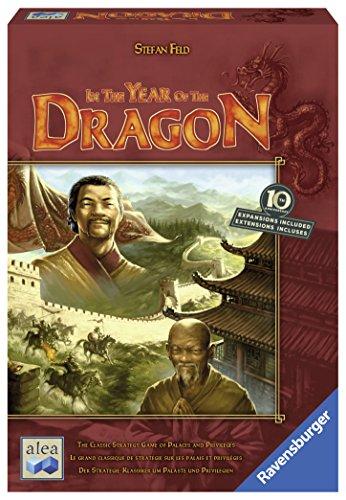
Players take on the role of Chinese rulers around the year 1000. The game plays out in twelve rounds, with each round representing one month in a year that seems to go from bad to worse. Disease, drought, and attacks from the Mongols may claim lives, but make sure you have enough money to offer a tribute to the Emperor.
The game play is easier than it may appear. Every player has a set of "person" cards. Each round, you choose one action (most of which call on your workers' abilities) to help you prepare for the months ahead. Then you play one person card, recruiting that person and placing him into one of your palaces. Each person brings different skills and abilities to help you ride out the year. (Farmers help you gain rice to survive a drought month, Tax Collectors raise money, etc.) At the end of each round, that month's event is triggered, which may cost you some of your workers, some money, or give you points.
Careful planning is the key to surviving "the year of the dragon," but survival alone may not win you the game.
Minimum Age: 12
Minimum Players: 2
Maximum Players: 5
Boardgame Atlas: Link
|
Alea |
Economic, Medieval |
2007 |
1 |



















































